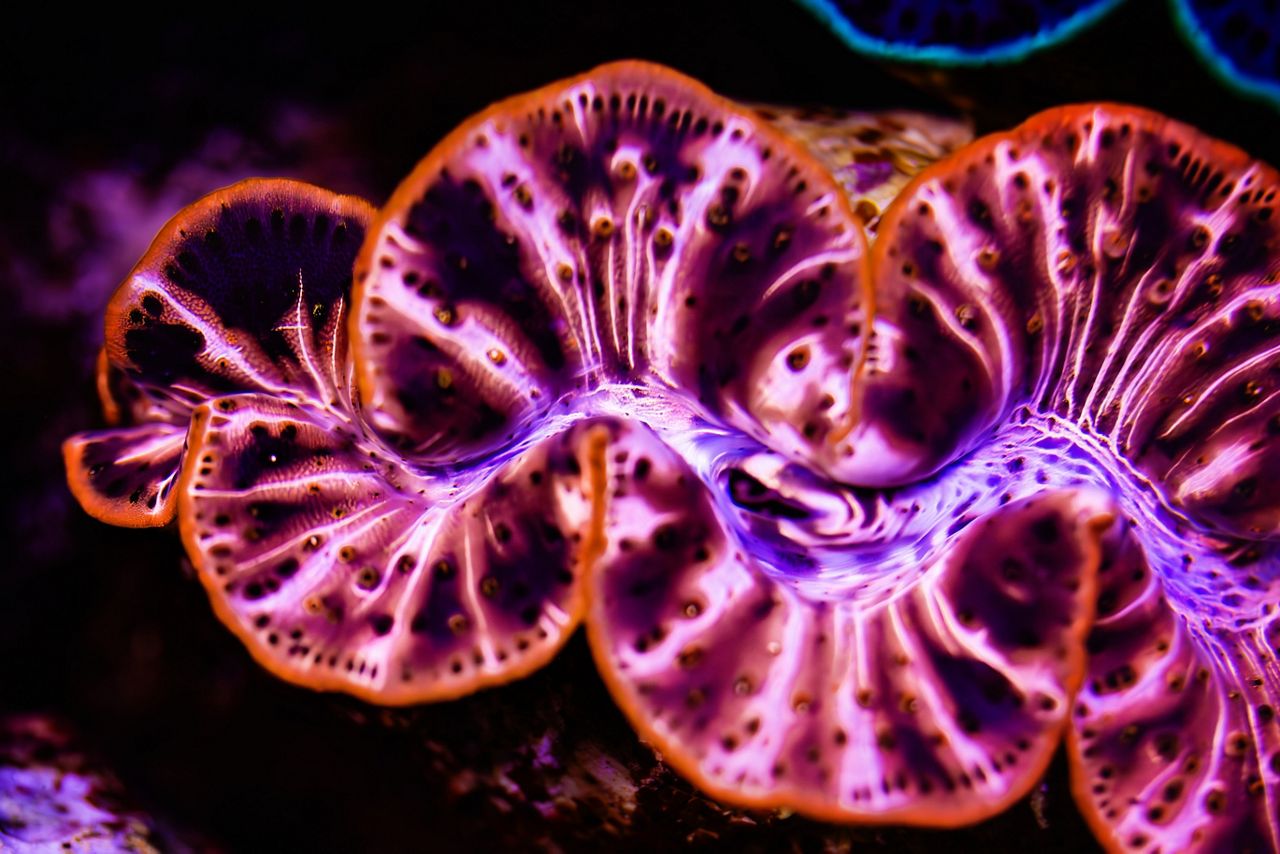SAN DIEGO — A group of giant clams now have a safe home thanks to a newly launched network that combats wildlife trafficking.
Fernando Nosratpour is the associate curator at Birch Aquarium. He has been taking care of more than 45 giant clams that were seized by the U.S. Fish and Wildlife Service.
“You see, the variety and the coloration, they’re really beautiful,” he said.
He said their stunning kaleidoscope of blues, greens and purples has made them popular in the illegal wildlife trade.
“Maybe once a year, sometimes twice a year, we’ll get a call from U.S. Fish and Wildlife,” Nosratpour said. “It can be corals. We’ve had sea horses before.”
This relocation was made possible by a first-of-its-kind program. The Southern California Wildlife Confiscations Network connects law enforcement agencies to aquariums and zoos so confiscated wildlife can receive immediate care.
Tamesha Woulard has worked for the law enforcement office at Fish and Wildlife for more than 30 years. She currently oversees the FWS Office of Law Enforcement uniformed officers for California and Nevada.

“Our job is to make sure that it was legally imported,” she said. “Every animal you can think of has the possibility of being trafficked. It’s just the nature of humans to try to make money.”
This partnership between the U.S. Fish and Wildlife Service and the Association of Zoos and Aquariums aims to streamline the logistics of relocating confiscated wildlife, especially in areas deemed as hotspots for wildlife trafficking like Southern California. Woulard said partners within the Wildlife Confiscations Network — such as Birch Aquarium — will help them save more lives.
“I can’t even put it into words the need for our partners to help, their expertise, because when we confiscate live animals, we don’t just want to send them somewhere; we want to send them to the best place where they can thrive,” she said. “They are beautiful. Glad to see them healthy.”
Some of the confiscated clams are on display for the public inside the Tropical Seas habitat in Birch Aquarium’s Hall of Fishes. They appear alongside several confiscated corals that Birch Aquarium worked with FWS nearly three decades ago to move. The Bubble Coral and Tongue Coral found in the Tropical Seas habitat are thriving and among some of the oldest living corals in aquarium care.
Nosratpour said they will always be standing by to help.
“The sooner we get them, the better the chances of saving them,” he said. “And to display them also and tell that story is one way that we can bring that awareness to our guests. And I think once they see the beauty of these animals, there is more respect for them.”
Giant Clams are listed as “vulnerable” on the International Union for Conservation of Nature’s Red List. Their large size, slow growth rate and stunning colors make them vulnerable to the illegal wildlife trade.
Wildlife crimes can be reported to the Fish and Wildlife Service’s wildlife trafficking tips line at 1-844-FWS-TIPS (397-8477) or online.



